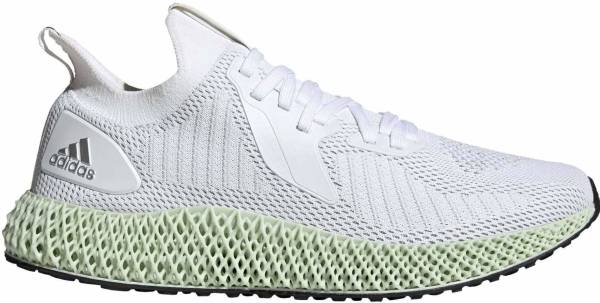

With fast production speeds and demand vastly outpacing supply, Carbon and adidas are building up momentum for a future manufacturing process, whereby adidas footwear is bespoke-produced, according to the individual needs of each athlete’s foot. They feature a midsole made of UV-curable resin and polyurethane mixture, arranged in complex lattice structures.Īccording to adidas, the midsoles of the AlphaEDGE shoes are specifically tuned to provide superior, controlled energy return. Photo via adidas.ĪlphaEDGE 4D LTD running shoes are available in core black, grey, aero and ash green.

The new adidas AlphaEDGE 4D LTD running shoes heel diagram. Off the back of this successful initial venture, Carbon has added Eric Liedtke, an Executive Board Member of adidas AG, to its own board of directors.

A further 5,000 pairs were released later in the year, by which time 2nd hand prices started exceeding $20,000. This technology allowed the development of intricate lattice midsoles that took into account the movement, cushioning, stability, and comfort needs of the wearer.Īn initial batch of 300 pairs of Futurecraft 4D running shoes was initially made available for $300. The latest venture from a fast-paced partnershipĬarbon and adidas’ partnership first came to light with the Futurecraft 4D range in April 2017, combining Continuous Liquid Interface Production (CLIP) enabled DLS 3D printing, a Speedcell system and a Smart Part Washer into the process. The new adidas AlphaEDGE 4D LTD running shoes modelled. The AlphaEDGE shoes can now be reserved for $300 using the adidas App, before picking them up on 17 February at adidas’ Santa Monica and Culver City stores in California. “We’re also waiting on the data to prove that this technology is not just for Gen Z it’s really useful for anyone of any age who buys shoes online.The collaboration between Carbon and adidas has blossomed once again, this time with the AlphaEDGE 4D LTD running shoes featuring midsoles 3D printed using Carbon’s Digital Light Synthesis (DLS) technology. “It’s exciting to see the immediate application of our AR try-on technology in e-commerce,” Klimpke said in a statement. Adidas has also made the feature available for a number of styles in its Originals range. Due to the technology’s ability to render accurate depictions of product styles, customers who use the feature are more likely to be certain of their choice upon purchase. The adoption of AR try-on technology is also expected to reduce returns for retailers.

L’Oreal reported that conversions increased threefold after introducing AR-supported try-on capabilities, and Klimpke believes that the footwear industry will see similar returns. While try-on technology is still new for the footwear industry, it has had success in the beauty market. “Viewing products in 3D is already known to increase conversions, and we’re anticipating a big increase in conversions through our footwear try-on technology,” Vyking CEO Matthew Klimpke said in a statement. Adidas and National Geographic Reunite for Aurora Borealis-Themed Collaboration


 0 kommentar(er)
0 kommentar(er)
